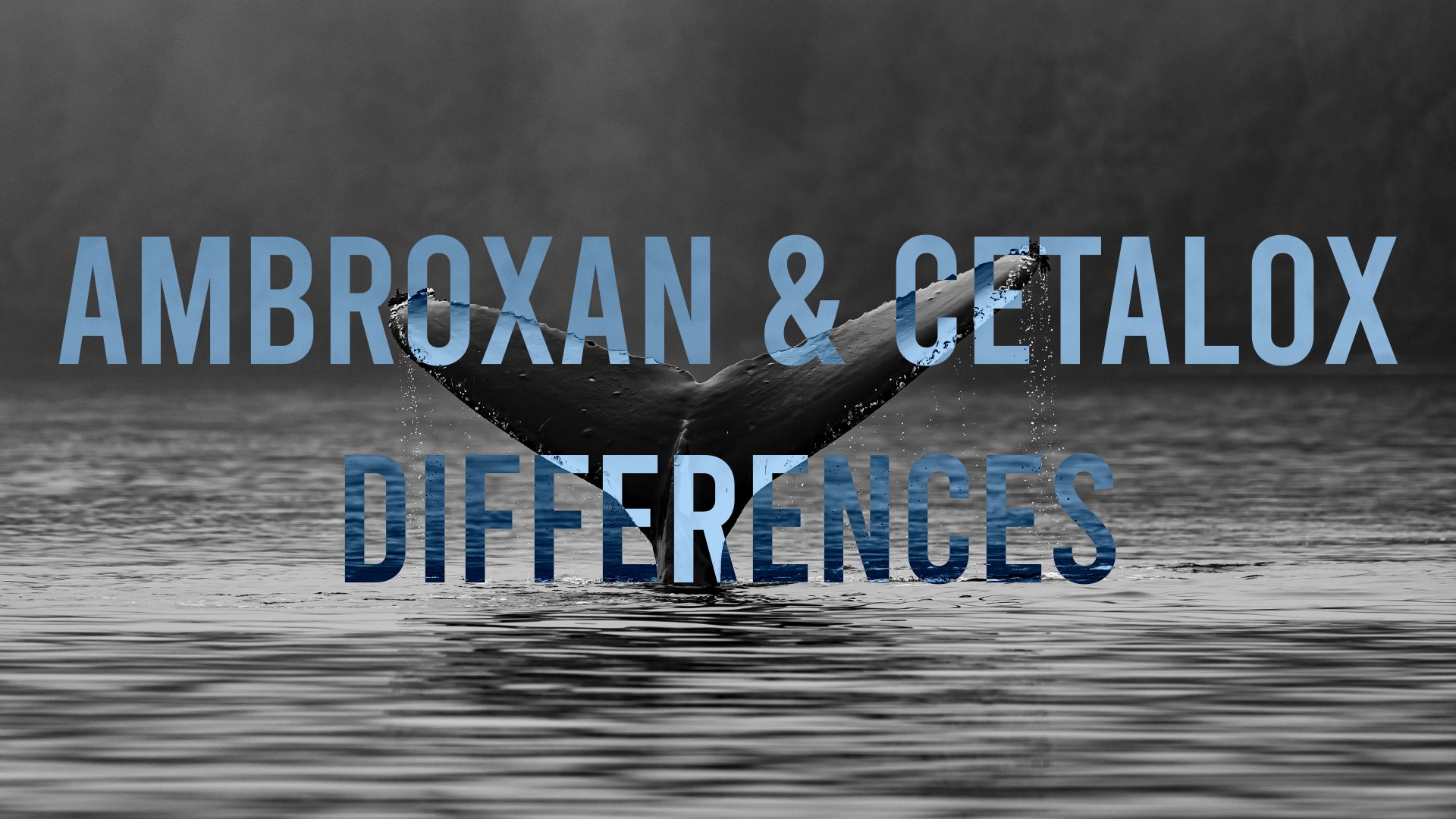Ambroxan® and Cetalox® Differences
Executive summary
When Escentric Molecule 02 (2008) bottled Ambroxan neat, it turned a lab aroma-chemical into a cult collectible; when Dior Sauvage went big in 2015, the note became mainstream. Today, these molecules' stereochemistry defines two distinct modern amber moods: Ambroxan’s crystalline, radiant freshness versus Cetalox’s warmer, creamier drift. Understanding their origins, optics, odor, and regulations enables perfumers to deploy each material with surgical precision.
TL;DR
Discovery – Ambroxan (1950, Firmenich); Cetalox (1993, Firmenich)
Chemistry – Ambroxan is enantiopure; Cetalox is racemic
Odor – Ambroxan = dry amber/woody; Cetalox = creamy amber/skin-musk
IFRA – No specific restriction for either material (IFRA 51)
Use level – 0.1–1 % in fine-fragrance concentrates; up to 10 % in “ambrox bombs”
Sustainability – Both produced from clary-sage-derived sclareol
From Ambergris to Ambroxan: A Journey Through Perfume History
Ambergris, a rare and enigmatic substance excreted by sperm whales, has captivated perfumers and cultures around the world since antiquity. Prized for its exceptional ability to enrich and fix fragrances, it was historically collected from ocean shores and traded as an invaluable commodity—often surpassing gold in price. For centuries, ambergris’s warm, musky, and marine undertones shaped iconic perfumes, representing luxury and exclusivity.
Scientific curiosity led to the identification of ambrein, ambergris’s key precursor molecule, first isolated by Nobel Prize-winning chemist Leopold Ruzicka and his collaborator Fernand Lardon in 1946. Ambroxide, the primary odorant derived from ambrein, was subsequently identified as the compound responsible for ambergris’s distinctive scent. However, obtaining ambroxide naturally remained prohibitively expensive and raised ecological concerns, prompting Firmenich’s groundbreaking chemical synthesis of Ambroxan in 1950. This innovation swiftly became a staple in perfumery, democratizing ambergris’s olfactory qualities by offering perfumers an ethical, sustainable, and affordable alternative. This development not only modernized fragrance formulation but also fundamentally transformed consumer expectations and olfactory aesthetics in contemporary perfumery.
Quick timeline
1948
Isolation of ambroxide precursors (dihydro-γ-ionone) from ambergris by Ruzicka & Seidel.
Source: Ruzicka & Seidel, 1948 — PubMed: https://pubmed.ncbi.nlm.nih.gov/18915722/1950
Firmenich patents the semi-synthetic production of Ambroxan from sclareol (Stoll et al.).
Source: International patent — https://patents.google.com/patent/CN105418566B/en1993
Market launch of the racemic form Cetalox®.
Source: Fragrantica, 2022 — https://www.fragrantica.com/news/Ambergris-Ambrox-and-Ambroxan-of-the-Year-17307.html
Chemistry
Ambroxan (CAS 6790-58-5) is produced as a single enantiomer; imagine one glove that fits the olfactory receptor perfectly.
Cetalox (CAS 3738-00-9) is a 50/50 mix of both “left- and right-handed” molecules, softening projection and yielding a rounder, muskier amber (Leffingwell, n.d.).
Comparative snapshot
Cetalox — Key Facts
• Optical purity: Racemate 50 : 50
• Odor facet: Warm, creamy, musky-amber
• Diffusion: Softer aura, longer dry-down
• Detection threshold: 0.5 ppb
• Typical dose in formula: 0.1 – 2 %
• Main suppliers / trade names: Firmenich (Cetalox®), Hubei Xinhua
Ambroxan — Key Facts
• Optical purity: (–)-enantiomer ≥ 99 %
• Odor facet: Dry, mineral, woody-amber
• Diffusion: High sparkle (“fresh-air” lift)
• Detection threshold: 0.3 ppb
• Typical dose in formula: 0.1 – 1 %
• Main suppliers / trade names: Givaudan (Ambrofix™), Firmenich (Ambrox® Super)
Sensory evaluation
We smelled both materials at 1 %, 5 %, and 10 % in DPG on blotters stored four weeks at 22 °C. Ambroxan opened with shimmering driftwood before drying to powdered cedar. Cetalox debuted as sweet ambergris then settled into a lactonic skin warmth. Panel consensus: blend both at 4 : 1 for a balanced “cashmere amber” accord.
Real-world perfume examples
Ambroxan and Cetalox have shaped numerous modern fragrances, each amplifying different sensory facets. Here are notable perfumes grouped by their prominent molecule:
Ambroxan-dominant fragrances:
Dior Sauvage (2015): Ambroxan-driven freshness balanced with bergamot and Sichuan pepper.
Another 13 by Le Labo (2010): Ambroxan woven with musk, jasmine, and clean, mineral accords.
Maison Francis Kurkdjian – Baccarat Rouge 540 (2015): Prominent Ambroxan creates a luminous, addictive amber with subtle sweetness.
Cetalox-centric fragrances:
Juliette Has a Gun – Not a Perfume (2010): Pure Cetalox emphasizing soft, skin-like muskiness.
These fragrances provide practical benchmarks, helping perfumers and fragrance enthusiasts distinguish clearly between Ambroxan’s crystalline freshness and Cetalox’s musky warmth.
Formulation tips
Anchor volatile ambers. A micro-dose (0.05 %) of Ambroxan adds lift to hedione-rich florals.
Boost gourmand bases. Cetalox excels next to tonka, musks, and Iso E Super.
Overdosing? Dior Sauvage reportedly contains ≈10 % Ambroxan—proof high levels can work if balanced by citrus and pepper.
Regulatory & safety
| Framework | Status |
|---|---|
| IFRA 51 | No specific restriction |
| EU Cosmetics Annex III allergens | Not listed |
| FEMA | Ambroxan CAS only; ≤ 0.01 ppm in flavors |
Disclaimer: informational only; always perform your own IFRA assessment before commercial use.
Sustainability note
Modern production leverages the terpenoid sclareol from clary-sage residues, avoiding whale-derived ambergris (Sniffing Out the Sustainable Future, 2024). Continuous-flow oxidation and solvent recycling have cut the carbon footprint ~70 % since 2015 (Firmenich internal data, 2023).
FAQs
Is Cetalox stronger than Ambroxan?
At equal concentration, Ambroxan projects slightly farther (lower detection threshold), but Cetalox lasts longer on fabric.
Are they safe for sensitive skin?
Current toxicology shows low sensitization; patch-test finished formulas above 5 %. Always disclose allergens.
References
Firmenich. (1950). Process for preparing ambroxide (Swiss patent). https://patents.google.com/patent/CN105418566B/en
Fragrantica. (2022, August 19). Ambergris, Ambrox and Ambroxan of the Year. https://www.fragrantica.com/news/Ambergris-Ambrox-and-Ambroxan-of-the-Year-17307.html
Leffingwell. (n.d.). Ambrox® chirality and odor thresholds. https://www.leffingwell.com/chirality/ambrox.htm
Ruzicka, L., & Seidel, C. F. (1948). The volatile components of ambergris I: Isolation of dihydro-γ-ionone. Helvetica Chimica Acta, 31, 827–831. https://pubmed.ncbi.nlm.nih.gov/18915722/
Sniffing Out the Sustainable Future. (2024). Chemistry—A European Journal. https://chemistry-europe.onlinelibrary.wiley.com/doi/10.1002/chem.202400006
